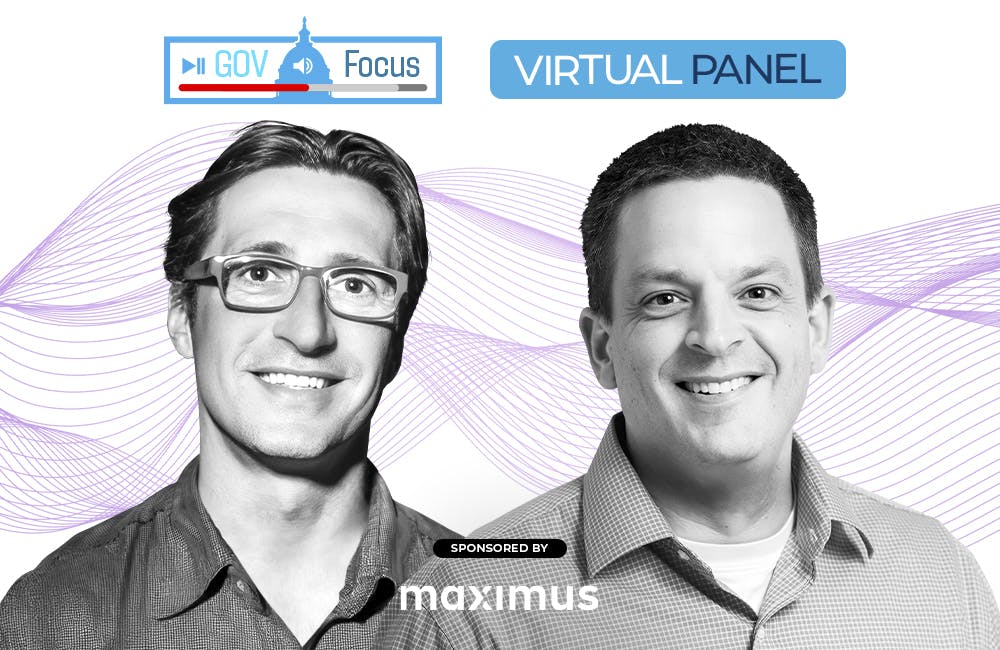Demystifying the Multi-Cloud Enterprise
The technology chief at the Small Business Administration discusses the pros and cons of adopting a multi-cloud strategy.

One of the fundamental questions that arises during an agency’s move to the cloud is whether to become a single or multi-cloud enterprise. Assessing that move may help save time and money, but each road has its pros and cons, according to Small Business Administration Chief Technology Officer Sanjay Gupta.
There are two general dimensions of what constitutes a multi-cloud environment within one agency. Having more than one cloud service provider is the obvious dimension, but the less intuitive one involves having functional variations of cloud, such as commercial cloud, government-dedicated cloud and military cloud, within one agency. That way it may be possible to be in a multi-cloud environment with one provider that provides services as those cloud variations, according to Gupta, who spoke at the FCW 2019 Cloud Summit Tuesday.
The traditional three domains to consider for a project like enterprise cloud migration are technology, people and process, and they are all interrelated, according to Gupta.
In terms of technology, three cloud migration considerations are connectivity, tools and data. Connectivity is important regardless of choosing a single or multi-cloud environment, though a multi-cloud environment heightens the importance of inter-cloud connectivity and comes with the cost implications of that. Secondly, tools in the cloud, however similar, will vary between providers. For example, IBM Cloud, Amazon Web Services cloud, Google Cloud and Microsoft’s Azure cloud often have terminology differences, even for comparable tools, that require experts for each provider to obtain the best performance. That could easily drive up the workforce cost, an obvious downside for an understaffed IT department. Thirdly, data must be considered. Choosing a multi-cloud environment will eventually lead to having to move data between different clouds. Putting data into one or multiple clouds has a low cost implication, according to Gupta, but extracting data usually has a higher cost implication.
The function of specific agency cloud environments will guide cloud migration and implementation, perhaps trading off some of the cost for increased functionality or flexibility, according to Gupta.
Gupta also touched on the issue of vendor lock-in and what that may mean for agencies. Potential higher costs associated with a multi-cloud environment may be offset by having the extra “room” that is absent in a single-cloud environment with one provider. On the other hand, having one CSP may be easier and cheaper to manage and leverage effectively, and it might be worth the potential downsides of vendor lock-in. Like pretty much everything else in the cloud and IT environments, the key is to find a balance.
At SBA, Gupta primarily leverages AWS and Azure clouds and also employs some software-as-a-service solutions from Salesforce and Adobe, among others.
Gupta advocated for agencies to start small in the cloud environment and build out from there. The biggest problem with cloud migration might be talking about it for too long without actually implementing any plans, according to Gupta.
“Get to a cloud, doesn’t matter which cloud it is. Make the decision quick because cloud is not your destination,” Gupta said. “Pick one, move on, and try to leverage the value that the cloud brings to you.”
This is a carousel with manually rotating slides. Use Next and Previous buttons to navigate or jump to a slide with the slide dots
-

DHA CDAO Spearheads Master Data Catalog to Boost Transparency
Jesus Caban plans to boost DHA's data maturity through a new master data catalog, governance frameworks and inventory of tech tools.
5m read -

IHS Prepares to Deploy PATH EHR at Pilot Sites in 2026
IHS targets PATH EHR pilot in 2026, emphasizing governance, collaboration and interoperability as key pillars of the modernization strategy.
4m read -

Trump Orders Spark Government-Wide Acquisition Overhaul
As Trump pushes for a faster, simpler procurement system, agencies are leveraging AI and adapting strategies to meet new requirements.
5m read -

IRS Makes Direct File Code Public as Lawmakers Debate Program’s Fate
The agency sees the Direct File source code as beneficial to government digital services despite what happens with it in proposed budgets.
5m read -

Inside Oak Ridge National Lab’s Pioneer Approach to AI
Energy Department’s Oak Ridge National Lab transforms AI vulnerabilities into strategic opportunities for national defense.
22m listen -

A Look at Federal Zero Trust Transformation
Recent developments from CISA and DOD show how government is advancing zero trust quickly.
20m read -

Modernization Strategies to Enable Energy Innovation
Lawrence Berkeley National Lab and Maximus experts explore the modernization strategies driving digital transformation and operational resilience within the energy sector.
33m watch -

DOI Must Modernize Energy to Win AI Race, Secretary Says
Doug Burgum links AI innovation to energy reform as DOI advances digital infrastructure and wildfire response under Trump’s tech agenda.
2m read -

Army Combines Commands to Propel Innovation Under New Transformation Plan
Lt. Gen. Miles Brown outlines a new transformation strategy after the AFC–TRADOC merger to integrate new technologies within 18 months.
4m read -

NIST to Release New AI Cybersecurity Guidance as Federal Use Expands
NIST plans to release AI cybersecurity guidance within the year to support safe adoption as federal agencies expand use cases.
4m read -

Federal Zero Trust Forum
The Federal Zero Trust Forum brings together key technology leaders from across government to explore practical strategies and share lessons for advancing zero trust architecture.
Ritz Pentagon City | 1250 S Hayes St, Arlington, VA 22202 -

CIA Adds Fourth Pillar to AI Strategy, CAIO Says
Lakshmi Raman says the new pillar marks a strategic shift toward embedding AI more deeply into the CIA’s day-to-day mission execution.
3m read
















